Density
Density is a measure of how much mass is contained in a given volume. It is a property of matter that describes the compactness of a substance. The formula for calculating density is:
Density = Mass / Volume
Where:
- Density is measured in units such as grams per cubic centimeter (g/cm3) or kilograms per liter (kg/L).
- Mass is the amount of matter in an object and is measured in units such as grams (g) or kilograms (kg).
- Volume is the amount of space an object occupies and is measured in units such as cubic centimeters (cm3) or liters (L).
Example
If a substance has a mass of 50 grams and a volume of 10 cubic centimeters, its density would be:
Density = 50g / 10cm3 = 5g/cm3
Study Guide
- Definition: What is density and how is it calculated?
- Units: What are the common units of density, mass, and volume?
- Relationship: How does density change with changes in mass and volume?
- Examples: Provide examples of objects with different densities and their characteristics.
- Importance: Why is understanding density important in science and everyday life?
Understanding density is important in various scientific fields, such as physics, chemistry, and engineering. It also has practical applications in everyday life, such as determining the buoyancy of objects in water and the composition of materials.
.◂Science Worksheets and Study Guides Third Grade. Hands-on Lab Skills/Science Inquiry - 3rd grade
Study Guide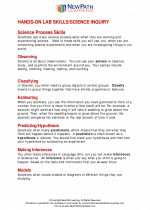 Hands-on Lab Skills/Science Inquiry - 3rd grade
Hands-on Lab Skills/Science Inquiry - 3rd grade  Worksheet/Answer key
Worksheet/Answer key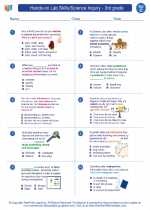 Hands-on Lab Skills/Science Inquiry - 3rd grade
Hands-on Lab Skills/Science Inquiry - 3rd grade  Worksheet/Answer key
Worksheet/Answer key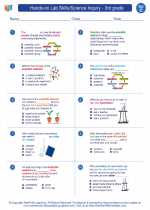 Hands-on Lab Skills/Science Inquiry - 3rd grade
Hands-on Lab Skills/Science Inquiry - 3rd grade  Worksheet/Answer key
Worksheet/Answer key Hands-on Lab Skills/Science Inquiry - 3rd grade
Hands-on Lab Skills/Science Inquiry - 3rd grade  Worksheet/Answer key
Worksheet/Answer key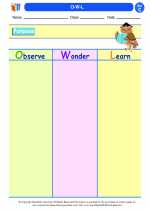 O-W-L
O-W-L  Vocabulary/Answer key
Vocabulary/Answer key Hands-on Lab Skills/Science Inquiry - 3rd grade
Hands-on Lab Skills/Science Inquiry - 3rd grade  Vocabulary/Answer key
Vocabulary/Answer key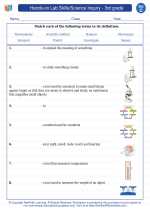 Hands-on Lab Skills/Science Inquiry - 3rd grade
Hands-on Lab Skills/Science Inquiry - 3rd grade 

 Worksheet/Answer key
Worksheet/Answer key
 Worksheet/Answer key
Worksheet/Answer key
 Worksheet/Answer key
Worksheet/Answer key
 Worksheet/Answer key
Worksheet/Answer key
 Vocabulary/Answer key
Vocabulary/Answer key
 Vocabulary/Answer key
Vocabulary/Answer key

The resources above cover the following skills:
Science as Inquiry and Process: A student should understand and be able to apply the processes and applications of scientific inquiry. A student who meets the content standard should:
Develop an understanding of the processes of science used to investigate problems, design and conduct repeatable scientific investigations, and defend scientific arguments.